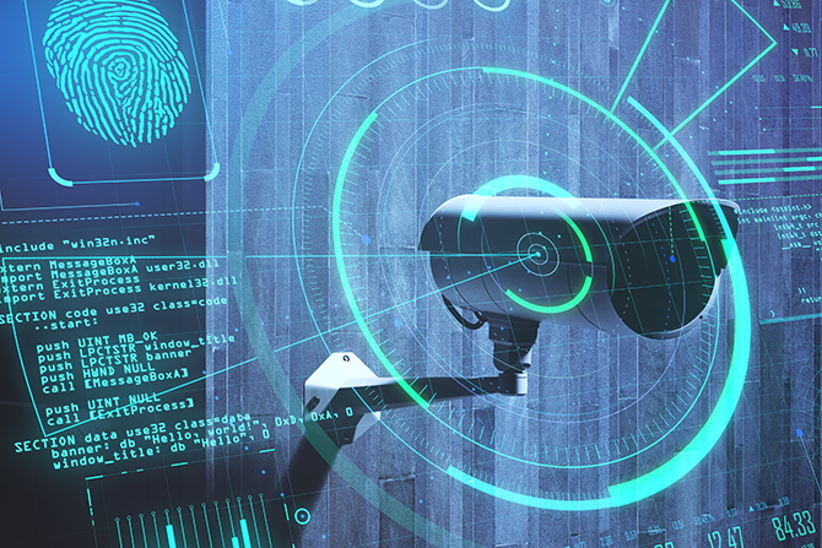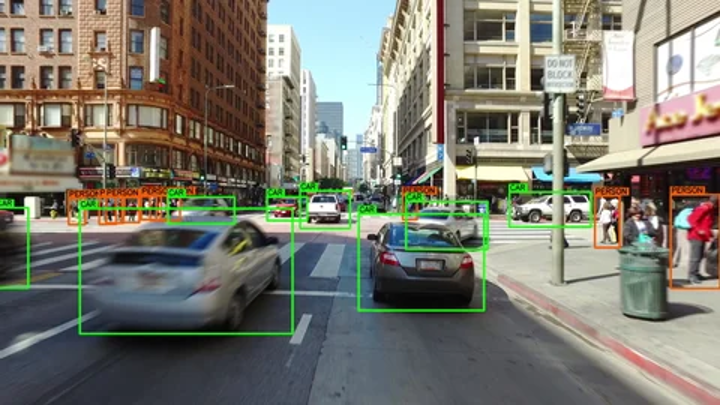Video Surveillance Systems: Choosing the Right Platform
You’re developing a video surveillance system, and you know that media handling will be at its core. You have several options: building from scratch, deploying a third-party media engine, or utilizing a hybrid approach. This blog discusses the unique demands placed on surveillance systems and the features developers should prioritize when choosing a media engine. Then, we’ll explore how Wowza Streaming Engine supports these requirements, providing the stability, scalability, and performance that modern surveillance systems need.
Table of Contents
Key Considerations for Surveillance Systems
Surveillance systems today face unique challenges due to the increasing demand for real-time monitoring and the sheer scale of modern deployments. From security cameras monitoring public spaces to complex setups in industrial or governmental facilities, these systems must meet multiple critical requirements to ensure their effectiveness.
Stability in Handling Inbound Video Streams
Surveillance systems often need to ingest live video feeds from many cameras simultaneously. These cameras are usually positioned in different locations, generating continuous streams of data that must be processed, viewed, analyzed (perhaps), and stored reliably. Stability in managing these inputs is paramount, as even minor interruptions could lead to critical gaps in monitoring. Whether it’s handling feeds from a few dozen cameras or scaling up to manage hundreds of inputs, the system must ensure that all video streams remain consistently operational without dropping frames or experiencing delays.
Scalability for Growing Systems
As surveillance needs expand, either by adding more cameras or increasing the areas under surveillance, the system’s ability to scale seamlessly becomes essential. The infrastructure must not only support an increase in the number of inputs, but also accommodate higher processing demands—whether for real-time analysis, archiving, or display purposes.
A scalable surveillance system must efficiently handle both the increase in data volume and the computational load without compromising performance or reliability. The ability to scale both vertically (with more processing power) and horizontally (by adding more servers) is often necessary to keep up with the demands of modern surveillance networks.
Real-Time Processing and Low Latency
In many security scenarios, especially those involving live monitoring, real-time video processing is critical. Operators must view live feeds with minimal delay to make timely decisions and respond quickly to potential incidents.
Low-latency streaming is particularly important for high-risk environments, where even a few seconds of delay can mean the difference between proactive action and missed opportunities. Sub-500 millisecond latency is an essential feature for real-time processing, ensuring that surveillance teams can monitor and react as situations unfold.

Multi-Window Display for Monitoring Multiple Zones
A key requirement for most surveillance operations is multi-window displays, which allow operators to view several camera feeds at once on a single screen. These displays must be synchronized to ensure that operators can effectively monitor all areas in real-time without discrepancies in video playback. For larger-scale systems, this capability becomes even more essential, as it allows security teams to keep track of multiple areas at once, enhancing situational awareness.
Security and Control Over Surveillance Feeds
Input and output security is always a top concern in surveillance systems. Unauthorized access to live camera feeds or archived footage could lead to significant security breaches. Systems must incorporate robust security measures, including encryption, access control, and authentication, to protect both live and stored video data.
In particular, features like SOC-2 Type II compliance, built-in DRM, and protection against DDoS attacks are crucial to maintaining the integrity of sensitive surveillance footage. These measures ensure that only authorized personnel can access the feeds, reducing the risk of tampering or data theft.
Customization, AI, and Integration
Surveillance systems often need to integrate with other platforms, whether it’s a broader security infrastructure, video management software (VMS), or specialized analytics tools such as facial recognition or object detection systems. Customization is key to ensuring the surveillance setup can meet specific operational needs.
The ability to build custom workflows, integrate with external systems, or modify how video feeds are processed and displayed allows for a tailored solution that can evolve with the needs of the organization. Additionally, leveraging AI and machine learning (AI/ML) technologies allows for automation and smart capabilities such as object detection or advanced analytics, enhancing surveillance efficiency.
Video Surveillance, Security & Monitoring
Real-time streaming solutions for local government and public safety.
Wowza’s Strengths for Surveillance Applications
By addressing these core needs—stability, scalability, real-time processing, multi-window display, security, and customization—surveillance systems can ensure they meet the increasing demands of modern environments. In this section, we explore how Wowza Streaming Engine addresses these specific requirements, providing a robust solution for surveillance applications
Robust Inbound Video Handling and Stability
Wowza Streaming Engine excels in media ingest by supporting a wide range of ingest protocols, including RTMP, RTSP, SRT, and WebRTC. These streaming protocols ensure compatibility with various camera types and encoders, allowing surveillance developers to choose the best setup for their specific environment.
Wowza also supports multiple video input codecs like H.264, HEVC, and MPEG-2, ensuring high-quality video streams even in bandwidth-constrained situations. For audio, Wowza supports AAC and Opus, making it versatile enough to handle both video and audio feeds.
The stability of the platform is further enhanced by Wowza’s support for IP whitelisting and source authentication, ensuring that only authorized sources are streaming into the system. These security features are essential for preventing unauthorized access, a key concern in surveillance environments.
Real-Time Processing for Low-Latency Surveillance
In high-stakes surveillance scenarios, every second counts. Wowza Streaming Engine is designed for real-time video processing, so security teams can monitor live events with minimal delay, even when represented by dozens of input streams. Via support for low-latency streaming protocols like WebRTC, and SRT, Wowza ensures that surveillance feeds are delivered in near real-time. With sub-500 millisecond latency, Wowza allows security operators to respond swiftly to emerging incidents.
For distributing feeds, Wowza’s low-latency HLS and DASH options allow it to maintain speedy streaming even at scale, enabling large surveillance systems to operate smoothly during critical events. This is particularly useful for law enforcement and security teams who need to respond to incidents as they unfold. With WebRTC, latency can be as low as a fraction of a second, essential for immediate decision-making.
Multi-Window Display and Stream Synchronization
As mentioned, multi-window displays are a key feature for most surveillance systems. Wowza Streaming Engine supports the playback of multiple streams simultaneously, enabling operators to create multi-window displays. While this requires some custom development, Wowza’s APIs and SDKs make it possible to build tailored multi-stream surveillance dashboards.
For synchronized playback, one of the challenges in multi-window setups is ensuring that all streams remain in sync. By leveraging Wowza’s hardware-based transcoding options, such as those powered by NVIDIA GPUs or Intel Quick Sync, the platform can transcode multiple video streams in real time. This ensures that all feeds are processed and displayed with minimal delay, maintaining synchronization across multiple windows.
Scalable Infrastructure for Growing Surveillance Networks
As surveillance networks expand, Wowza’s scalable architecture comes into play. The platform is designed to scale both vertically (adding more processing power to a single server) and horizontally (adding more servers or edge locations). This ensures that whether you’re monitoring a single building or an entire city, Wowza can keep up with the increased load without performance degradation.
Wowza Streaming Engine can be deployed on-premises, behind firewalls, or on cloud platforms like AWS EC2. This flexibility allows organizations to choose the deployment model that best suits their security and operational needs. In addition, Wowza’s ability to add standalone instances and edge servers enables easy scaling without the need for a complete system overhaul.
Security and Compliance
For security applications, protecting the integrity of video feeds is non-negotiable. Wowza Streaming Engine offers robust security features, including SSL/TLS encryption, password protection, and SecureToken integration, which protects against spoofing attacks. Wowza’s SOC-2 Type II compliance and built-in DRM offer additional safeguards to ensure surveillance data is protected from breaches and DDoS attacks. IP whitelisting provides further control, ensuring that only trusted sources can stream video into the system.
This focus on security ensures that surveillance data remains private and inaccessible to unauthorized users, even as it scales across larger and more complex networks.

Continuous Improvement and AI/ML Capabilities
Wowza has a proven track record of powering reliable, 24/7 video streaming solutions, which is critical for round-the-clock surveillance operations. The platform is regularly updated with performance enhancements, such as improvements to HTTPS delivery performance, potentially doubling its efficiency for secure video streaming. This kind of continuous improvement ensures that Wowza stays ahead of the curve, offering a solution that evolves with the needs of modern surveillance systems.
Additionally, Wowza Streaming Engine can leverage AI/ML technologies to implement smart surveillance features such as object detection, facial recognition, and automated alert systems, enhancing the intelligence of any security system.
Proven Track Record and Scalability
With over 35,000 video streaming implementations worldwide, including partnerships with leading organizations like NASA, Sony, and SpaceX, Wowza Streaming Engine has consistently demonstrated its ability to deliver high-quality, scalable, and reliable solutions. Whether you’re developing a small-scale surveillance system or a large city-wide network, Wowza provides the tools and expertise to ensure your system scales efficiently and reliably.
Conclusion
When it comes to surveillance, the Wowza Streaming Engine provides the stability, scalability, and real-time processing needed to ensure smooth and secure operation. With its ability to handle multiple streams, process video in real-time, and scale to meet the demands of growing surveillance networks, Wowza is a reliable foundation for any security infrastructure.
Learn more about how Wowza Streaming Engine can strengthen your surveillance system.
FREE TRIAL
Live stream and Video On Demand for the web, apps, and onto any device. Get started in minutes.
- Stream with WebRTC, HLS and MPEG-DASH
- Fully customizable with REST and Java APIs
- Integrate and embed into your apps




